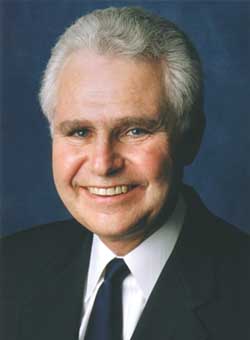There’s a lot going on in the energy world right now. The United Nations Climate Change Conference (COP26) is happening in Glasgow, Scotland. Congress recently passed major new energy legislation in the Infrastructure Investment and Jobs Act. And as consumers soon will find out if they don’t already know: much higher energy costs and heating bills are coming their way this winter. Throughout all this, energy policymakers and especially those in the electricity sector need to focus on preserving and enhancing a powerful tool that President Biden himself has stated is a “cornerstone of the American economy”: competitive markets.
COP26 makes for good political theater, but will it result in anything useful? Maybe. But Greta Thunberg is probably right—it’s a lot of “blah, blah, blah.” These meetings are like Wimpy in the Popeye cartoon, who said, “I will gladly pay you Tuesday for a hamburger today.” World leaders say, “I will gladly reduce emissions Tuesday (or 25 years from now or after I’m dead) if somebody will ensure the lights stay on, prices stay low, and I get reelected today.”
And as for the new Infrastructure Investment and Jobs Act, there are some important and positive energy provisions in it. But I was general counsel of the U.S. Department of Energy when major federal energy legislation was passed in 2005 and 2007. Based on that experience, I’d say the new law will take longer to implement than anybody thinks, it won’t turn out quite as anybody planned, and court challenges could slow down or stop even the most well-intentioned laws and regulatory actions.
So, what should we be doing right now that would be good for the economy, consumers, and the environment? How about this: in the power sector, we should ensure durable market structures are in place that by their very design deliver reliable supplies of electric energy, at reasonable prices, and reduce emissions over time. This can be done. And it’s particularly important now given the importance of increased electrification to reducing economy-wide greenhouse gas (GHG) emissions.
The way to accomplish this is through the preservation, enhancement, and expansion of competitive power markets. Many are working on this, including through the Columbia—Johns Hopkins Future Power Markets Forum. But more work and more pro-market actions are needed, particularly by key policymakers.
The importance and use of competitive markets shouldn’t be a revelation—they have long been key to ensuring reliable electric supplies at reasonable cost. Greater focus on renewable energy resources and reducing GHG emissions doesn’t mean we should abandon competitive markets—it means they are now more important than ever.
For a long time, there were two primary objectives of the electric power industry and electricity regulators: supplying reliable electric power to consumers at reasonable cost. Reliability and cost—those were the things that mattered.
Now, there are three things: reliability, cost, and lower GHG emissions. Pollutants from power plants have long been a concern, but they’ve been dealt with as an externality to be managed. Today, GHG emissions are a key attribute of electric power itself. But reliability and cost are still critically important. Any company or policymaker who forgets that does so at its peril. If the power goes out or costs go up, consumers have a way of suddenly worrying less about emissions and worrying more about when the lights are coming back on and whether they can pay their bill.
The way to effectively ensure electric reliability at a reasonable overall cost while also reducing emissions is through well-functioning competitive markets. And the power crises in Texas and California in the recent past don’t demonstrate otherwise—they just underscore the importance of the right market rules. The competitive market didn’t cause either power crisis—any more than the lack of renewable energy did.
Well-regulated and well-designed competitive markets have long been key to ensuring reliable electric supplies at a reasonable overall cost. The PJM region’s competitive power markets and planning processes alone help save customers $3.2 billion to $4 billion per year. A recent report by the Pacific Research Institute explains how competitive power markets have helped bring about both lower prices over time and lower emissions. A bipartisan group of former Federal Energy Regulatory Commission (FERC) commissioners has noted the critical importance of organized competitive wholesale power markets to “a least-cost customer-centric transition to a low carbon or zero-carbon grid.”
Reliability, reasonable cost, and reduced GHG emissions—ensuring our power system provides all three, and at the same time, is key to the energy transition ahead. The best way of accomplishing all three of these objectives is through well-regulated and well-functioning competitive power markets. For the benefit of American consumers, the economy, and the environment, now more than ever, federal and state policymakers should ensure competitive power markets are preserved, enhanced, and expanded.
—David R. Hill is an attorney and adjunct senior research scholar at Columbia University’s Center on Global Energy Policy. He previously served as executive vice president and general counsel of NRG Energy Inc., and general counsel of the U.S. Department of Energy during the George W. Bush administration.








